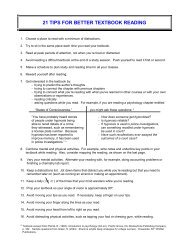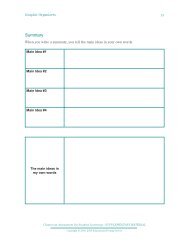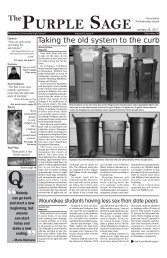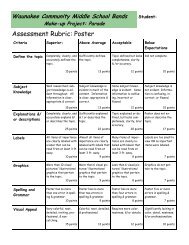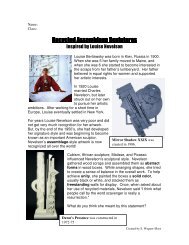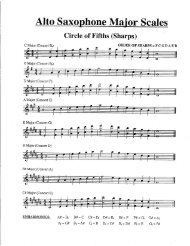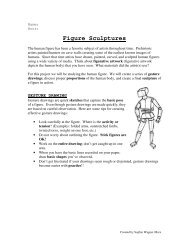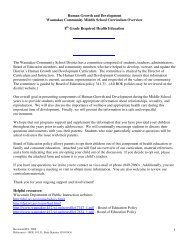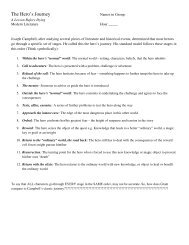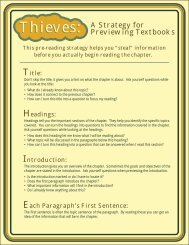Repousse Masks
Repousse Masks
Repousse Masks
Create successful ePaper yourself
Turn your PDF publications into a flip-book with our unique Google optimized e-Paper software.
It is interesting to note that traditionally masks are created and worn exclusively by men.<br />
While masks can be female in design, only male dancers wear the masks and are<br />
controlled by the masks spirit. Female artists in traditional African society specialize in<br />
functional 2-D arts like textiles and decorative house painting.<br />
Traditional African masks can be made from a number of<br />
materials including bronze, brass, copper, ivory, leather, clay,<br />
or textiles. Wood, however, is the most common material<br />
chosen for the creation of a mask. One reason for this is that it<br />
is believed that trees have a soul, so masks carved from trees<br />
will also have a soul.<br />
In addition to their significance in Africa, masks have played<br />
important roles in other cultures throughout the world. Burial<br />
masks were used in China, Rome, Mexico, and Egypt.<br />
Theater masks were used in China, India, Japan, Greece, and<br />
Rome. And, in various tribes throughout the Americas, ritual<br />
masks are used in ceremonies for fertility, planting,<br />
harvesting, curing illness, and combating witchcraft.<br />
There are a few important things to know about the design of<br />
African masks. The shape, features, and patterns of a mask all<br />
help depict its spirit or personality.<br />
African craftspeople employ a variety of design tactics when<br />
creating a mask. A good place to start is with the overall shape.<br />
The shape of a mask can be oval, heart shaped, animal, human,<br />
circular, rectangular, or any combination of these. African<br />
masks almost always exhibit symmetrical balance.<br />
Symmetry is<br />
___________________________________________________<br />
__________________________________________________.<br />
Features of African masks are very simple and stylized.<br />
Features help describe the spirit of the mask by showing the<br />
audience if the mask represents courage, beauty, humor,<br />
mischief, honesty, etc. Emphasizing features through<br />
exaggeration will also help you portray the spirit of your mask.<br />
Think about enlarging the lips, eyes, or nose for added effect.<br />
(When you decide on the personality your mask will have, look<br />
Created by Sophie Wagner-Marx



